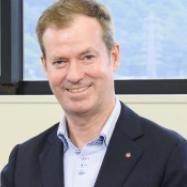Yanfeng Debuts Striking EV Interior Concept at CES 2024
The Chinese Tier I’s presence at the annual consumer electronics fest in Las Vegas is, more than anything, an indicator that future vehicles are essentially software-centric electronic devices on wheels.
January 9, 2024

At a Glance
- Strong mobility presence at CES as some traditional auto shows lose relevance
- Yanfeng’s software interior is a departure from current EV cabins, which typically resemble their gas-powered cousins
- The future vehicle architecture incorporates all key features and interior functions into a Smart Cabin Seat
As some traditional auto shows built on performance gasoline-powered vehicles flounder, the Consumer Electronics Show (CES) in Las Vegas, running this year on Jan. 9 to 12, has emerged as the platform of choice to showcase the latest in mobility solutions. That’s understandable, particularly given that the vehicle of the future is essentially a software-centric electronic device on wheels rather than the mainly hardware-based car of the past. PlasticsToday plans to highlight noteworthy mobility developments originating from CES over the course of the next week. First up is a transformative electric vehicle (EV) interior concept from leading Chinese OEM Yanfeng.
An interior concept for EVs
Yanfeng notes at the outset that while powertrains of electric vehicles have undergone a complete transformation, the interior has not changed substantially. Interiors of current EVs have largely resembled their gas-powered counterparts, until now.
At CES 2024, Yanfeng is debuting its Electric Vehicle Interior (EVI) concept. This is a vision for future vehicle architecture, which eliminates the traditional instrument panel and incorporates all key features and interior functions into a so-called Smart Cabin Seat, including an active headrest with audio, safety systems, smart surfaces, and storage and charging integrated into the seat.
Through the development of EVI and the Smart Cabin Seat, Yanfeng's experts challenged themselves to simplify the vehicle interior while keeping the functionality that users expect. The Yanfeng solution builds it all back in a unique way — an all new module that incorporates both front seats, integrated floor console, steer-by-wire input system, HMI, displays, seatbelts, and airbags, in addition to a HVAC microclimate system for thermal comfort.
Research shows three areas of EV owner interest
Over the years, Yanfeng has conducted multiple studies on EV interiors. The company’s research has consistently shown three areas where EV owners (and those interested in EVs) want more.
First, end users interested in EVs want access to more technology. They expect an electric vehicle to have more and different/unique technology than an internal combustion engine (ICE) vehicle.
Additionally, end users interested in EVs expect a smooth and seamless experience with technology. It needs to work as well, or better, than what they have today and should be used to provide feedback and information to the user that builds trust in the electric vehicle. This is especially important to first-time EV users.
Finally, many end users are looking for EVs to provide a fun and enjoyable experience, something different than an ICE. Technology is something that can help deliver this.
Yanfeng's User Experience Research team also conducted research with end users through an early concept of the EVI demonstrator, bringing in research participants and allowing them to experience the re-imagined vehicle interior firsthand. Findings from this research showed end users appreciated the dramatically different layout and interior spaciousness of the EVI concept.
Simplified assembly process
Not only does EVI offer a new interior space for occupants, it also has the potential to simplify the vehicle assembly process for automotive manufacturers. With all key cockpit components integrated into the Smart Cabin Seat, installation into the vehicle is easier, faster, and less costly than conventional assembly. This was enabled by Yanfeng's cross-business capabilities, combining knowledge and experience across all its product categories — electronics, safety systems, seating, and interiors.
A seat at the sustainability table
With key vehicle control and interface elements integrated into the Smart Cabin Seat, the need for a traditional instrument panel is eliminated. This enables reduced overall vehicle weight and CO2 emissions, as well as increased efficiency, and promotes extended EV range. The ease of installation of the Smart Cabin Seat also bodes well for an end-of-life vehicle (ELV) strategy, making it just as easy for disassembly, thus, boosting vehicle circularity efforts.
Furthermore, the EVI exemplifies Yanfeng's commitment to sustainability through careful consideration of materials selected and manufacturing processes. This includes the use of sustainable, high-performing cover stock materials that are combined with Yanfeng's compression hybrid molding (CHyM) substrate panels, which use renewable fibers to reinforce thermoplastics to create a lightweight and circular solution via injection molding.
About the Author(s)
You May Also Like




